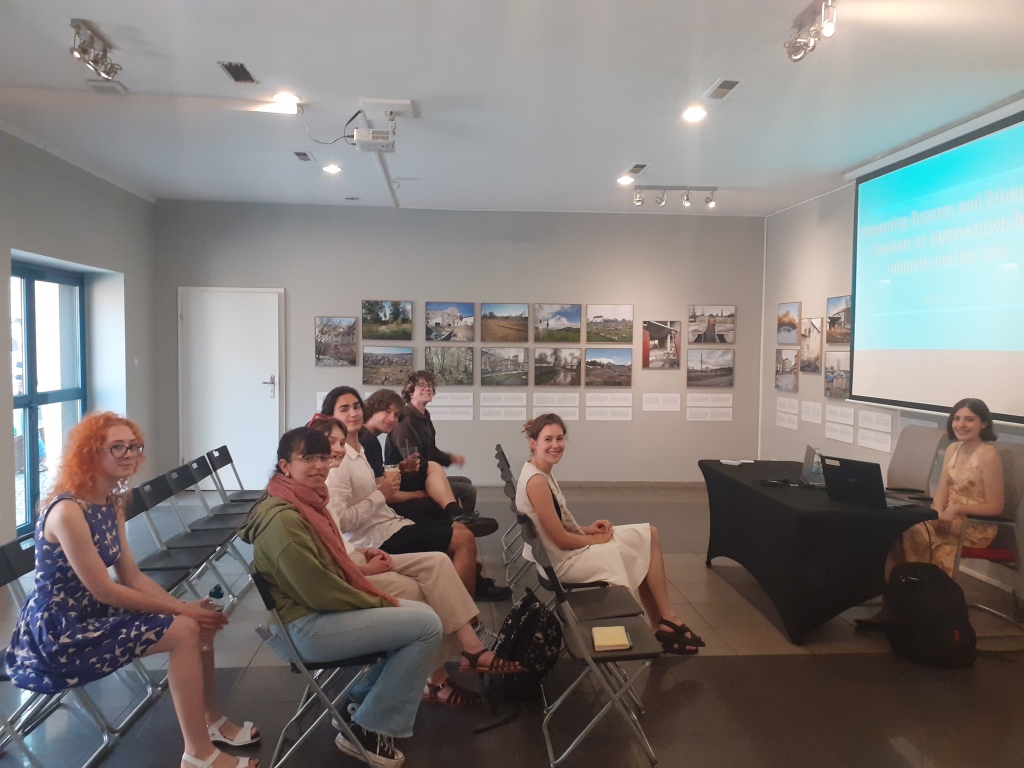As a history major, I was hunting for an internship with some kind of historical institution. At the same time, I was planning my long-awaited spring semester abroad in Krakow, Poland. I was extremely fortunate to discover that these two things could be done as one, and the Galicia Jewish Museum was the perfect place for it. I first heard about the museum through my study abroad program API, which highlighted it as a good location for Americans like myself to intern. This proved entirely correct, as from the beginning, the museum’s relaxed and English-friendly environment allowed me to settle right in. I found growth and education through this institution, and I could not be happier with the results.

There was great flexibility in the types of tasks I was given through working with the museum’s education department under Dr. Katarzyna Suszkiewicz, or “Kasia.” As my boss, she worked to cater my tasks to my interests, goals, and abilities, playing to my strengths and challenging me to work on my weaknesses. For example, my abilities as a native English speaker were put to use in a variety of ways, such as proofreading various documents and newsletters that had been translated from Polish. One of my biggest assignments was reading a new book that the library had added to its collection and writing a book review for it that was then published on the book’s website.
One of the most challenging and rewarding jobs I completed for the museum was learning how to become a tour guide and subsequently guiding tours. The amount of work that goes into learning and memorizing an exhibition catalog is extensive and much greater than I would have imagined before my arrival; it takes immense practice to make something look effortless. I have given numerous presentations in my academic career, but they have always been memorized, practiced, and in front of a seated, captive audience. Tours require different skills, as I have found, since a guide not only must keep their group’s attention, they must also direct them and mold their experiences of an entire space. Not only that, but the practice is dynamic, since it requires quick thinking in order to adapt to a given group’s individual needs. By undergoing this learning process, I improved my public speaking skills and became far more confident in my ability to dynamically present information. I gave a total of four tours once I was approved to do so, and every one taught me something new. Through this process, I even learned new things about myself, such as my enjoyment of engaging with the public.

It wasn’t all work and no play though; I was able to go on an educational trip with the other interns, and we went to Sosnowiec and Będzin to learn about the history of the Jewish communities in those areas. This gave me a fuller picture of the scope of history that this museum seeks to present and revive. It gave substance and greater context to what Traces of Memory seeks to teach its audience, as seeing sites in person really gives such amazing perspective. I know I was greatly interested in the bimah of Tarnow’s great synagogue, for example, but it was another thing entirely to see it in person and to truly appreciate its scale. To anyone who thinks working in a museum is stuffy or stifling, you are sorely mistaken.

Overall, my time at the Galicia Jewish Museum improved my communication and public speaking skills, and broadened my horizons. It forced me to grow in so many ways, both great and small, and I cannot recommend this location enough. It’s accommodating to any schedule, person, or interest, and as it approaches its 20th anniversary, it’s only getting better.
By Julia Moor
